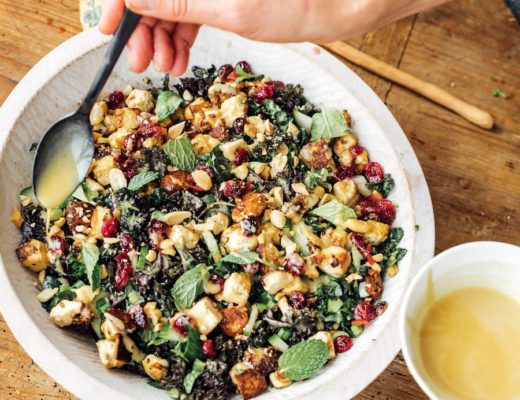On today’s post we’re talking about which are the better sugar alternatives and which ones we’d skip.
We’re seeing an explosion in sugar-free products, primarily influenced by the keto diet trend, but most sugars used in these products cause a lot of tummy trouble for most.
We’ll start with the good news; not all sugar is a no go. BUT the more sweets you eat, the more you want it.
So let’s dive into why we crave sugar, what can be behind it, and end with the best sweetness that meets my approval!
With cravings, we have several things going on, and each one affects and drives the others.
INSULIN RESISTANCE RAISES CRAVINGS FOR SUGAR
First is insulin resistance, as covered HERE.
If your cells are taking in less sugar because they’re resisting insulin knocking at their door to let in sugar, then the cells have less energy to work with.
That sugar is there, and insulin is happily converting it to fat, but your cells aren’t getting it so of course they’re hungry and will keep telling you to eat more until they finally get some.
The more insulin resistant you are, the more of what you eat is going to fat storage and less to your cells.
This will happen even if you’ve just eaten a lot of food. It’s in your bloodstream, but the cells aren’t getting it so they’re still hungry and demanding you eat more.
And they’ll especially crave fast-acting sugars so they don’t have to wait for a slow-digesting sugar to finally get to them. If they’re starving then they want energy now.
So insulin resistance created by processed sugars leads to more and more cravings for processed sugars.
The only way out of this is to cut down sugar levels, which cuts down insulin secretion and lets the cells get over themselves enough so they’re willing to take in more sugar when it comes.
This could take a week or two for some, or months in some extreme cases. But it does happen and the cells become insulin-sensitive once more and much less insulin is needed, the sugar goes in easily, and much less fat storage occurs.
SMALL INTESTINAL BACTERIAL OVERGROWTH (SIIBO) CREATES SUGAR CRAVINGS
Then there are the bacteria in your small intestine.
If you’ve been on a higher sugar diet for some time, and your stomach acid levels are low, then likely you have some critters there. And they thrive on processed sugar the most.
They also make their needs known if they don’t get what they want. They actually use the same channels your cells use to communicate their wants to the brain, so you will literally feel their cravings.
And, if you don’t feed them, and they start dying off, you will feel their pain to a degree until they’re dead.
Also, as these critters are consuming some of your food, again, your cells are getting less of what you’re eating, in this case, because some of the food is being diverted en route. So the cells will want fast-acting sugar to get them energy for this reason as well.
YOUR BODY CELLS CAN BECOME ADDICTED TO SUGAR
There is also the matter of an actual addiction the cells form to this processed sugar. It hits the same pleasure receptors on cells as heroin does. It’s a real addiction and they need to be weaned off it one way or another. They’re too used to it.
This is, largely, discipline to get through the withdrawals, similar to reversing insulin resistance, but can be greatly helped by increased protein and healthy fats in the diet.
Also, remember that these big food companies hire very talented chemists. These foods are made to be addictive because they want you buying more.
You know the saying that you can’t eat just one Dorito, right? You can’t, the bag won’t let you! Most people keep eating from the bag until they’ve got a stomach ache, take a 5-minute break, and then go back at it until they’ve finished the bag!
And yet, according to their nutrition facts, one serving is 12 chips, and that’s 150 calories.
But do you ever eat only 12?
No, of course not. Well, there are 16 servings in that bag, so one bag is 2400 calories — all fast-acting carbs, refined fats, and toxic flavorings and colorings.
But they taste sooooo good. So we’ve got that hurdle to get over too.
Now, all of the above will take most people a week or two to get through. And don’t worry, the protocol in the guide is designed to make this as gentle on you as possible and you will get through it and you will be very happy that you did.
THE HORMONES THAT REGULATE YOUR HUNGER: LEPTIN & GHRELIN
But there is another aspect that plays a very large role in this.
There are specific hormones that control your cravings: Leptin and Ghrelin.
Remember that hormones are chemicals that pass on messages to and from cells.
Leptin passes messages that stop or lower cravings and Ghrelin passes messages to increase them. And of the two, Leptin seems to be the one most in control.
Now, this is an area where much more research needs to be done, but we do know key facts about it.
When we eat there is always some fat creation and break down, even if minimal. This is a constant process.
There are also free-floating fatty acids in the bloodstream which can be used for energy if needed.
And, the more fat you have on your body, the more free-floating fat you will have in your blood vessels.
Leptin is a hormone produced by the fat cells. This happens every time we eat, but also happens when there are higher amounts of fatty acids in the bloodstream or stored in our fat cells.
This Leptin then goes to the brain where it hits specific leptin receptors in the hypothalamus (a part of the brain) and passes on the information that we’ve had enough food and so don’t need to eat anymore, and that we can dip into our fat stores for energy now.
In short, it tells us to not feel hungry and that it’s okay to burn fat as well.
Then, if time passes and leptin levels in the bloodstream lower, the brain sees this and knows it needs more food and so directs that ghrelin, the other hormone, is released by the stomach to increase hunger cravings and to not dip into fat stores for energy.
This is why ghrelin levels are highest before a meal. Ever had your stomach growling because you’re hungry? That’s ghrelin.
Now, here’s the problem: the more fat the individual has on them, the more free fatty acids there are in the bloodstream and the more leptin the fat cells release.
These should then be seen by the brain telling it that you don’t need any more food right now.
So, the more body fat you have, the less hungry you are, right?
Yeah… So what’s happening here?
Well, like insulin resistance, there is something called leptin resistance where the brain literally doesn’t “see” the leptin.
And, as leptin is the brain’s indicator that the body has eaten and has enough energy stores… if it doesn’t see leptin, then it thinks it still needs food and so directs the release of ghrelin to make you hungry to eat more.
So, despite having just eaten, we can continue to have more cravings. Your brain doesn’t see any leptin, thinks you’re starving and works very hard to make you eat more.
And these cravings can be very strong. After all, your brain thinks you’re starving.
One of the main things that causes this is excess triglycerides (the most common type of fatty acid in your blood).
You see, there is something called the blood-brain barrier. This is a literal barrier that allows certain things through to the brain while keeping out other things, all to protect the brain.
But excess triglycerides can get stuck here and start clogging this barrier. This makes it harder for nutrients and other chemicals and hormones to get through — including leptin.
So you’ve just eaten and plenty of leptin is in the blood, but… it can’t make it through the barrier to be “seen” by the brain. So the brain thinks you’re still hungry, despite having just eaten a lot of food, and instructs the stomach to release more Ghrelin, making you hungry again.
Another point is that just having overly high levels of leptin seems to increase leptin resistance. The leptin receptors in your brain become de-sensitized to the leptin because it’s “always” there because you eat so much that there is so much.
And last is inflammation. High levels of inflammation raise cortisol, which we’ll cover shortly, which also raises ghrelin levels, increasing your appetite.
And one of the fats that raises inflammation the most is trans fat, which also clogs in the blood-brain barrier and can cause more trouble than triglycerides there.
This is one of the largest factors in yo-yo dieting, losing weight and then gaining it all right back again.
Look, you work hard to reduce processed sugar and calories and somehow push through the withdrawals and lose fat. Maybe your cells become insulin sensitive again and come off their addiction to sugar. Your small intestinal bacteria numbers go down as they’re dying off due to less of the food they thrive on (processed sugars).
But… the blood-brain barrier is still clogged and so the brain still isn’t “seeing” the leptin and so still sends ghrelin to keep you hungry.
Then we give in and go back to our old ways, gaining all of our fatback and then some.
What is clear is this – the less sweetness you consume, the less sweetness you crave.
GETTING RID OF SUGAR CRAVINGS
First, we need to get rid of these processed sugars as these are the main things that create so much excess triglycerides which clog the blood-brain barrier and prevent leptin signaling in the first place.
Next, avoid processed foods. These, even when made from organic ingredients, are often in a form after processing that our digestive system has trouble breaking down and which can lead to inflammation, especially from rancid refined fats and trans fats.
Also, partially digested proteins contribute to inflammation, so we need to make sure the gut is in good health and properly functioning.
And, of course, get good sleep. Poor sleep, along with inflammation, raises cortisol levels which releases ghrelin, making one more hungry just because they’re tired.
And lastly, but most importantly, protein is actually the key thing that reverses leptin resistance, which makes sense.
The enzymes that break down triglycerides and trans fats, including those clogging the blood-brain barrier are all made of amino acids.
But these enzymes have a relatively short life and new ones constantly need to be made. The less amino acids one has, the less enzymes their body can produce overall, lowering the breakdown of fat among other things.
Let’s get into our approved sweeteners:
- Stevia: This plant-based sweetener is a yes in my book. However, not all stevia is created equal, so aim for whole leaf stevia. Not all stevia is created equal. Truvia doesn’t make the cut because of the additives added.A noteworthy mention is New Naturals which offers good-quality stevia.
- Monk Fruit: This is a melon-derived sweetener. The issue is most often mixed with erythritol. Search for pure monk fruit.
- Allulose: This “rare sugar” found in fruits like jackfruit, figs, and raisins is an intriguing option that could even lower blood sugar and reduce liver fat storage.
Sweeteners to step away from? Sucralose, Saccharin, and Aspartame. These are synthetic sweeteners. Yes they are calorie-free, but at what cost. Then theirs regular table sugar which should be eaten in moderation.
Erythritol, a popular sugar alcohol, is an interesting case. While a study linked erythritol to heart attacks, we question its validity due to erythritol’s relatively recent ‘safe’ status (granted by the FDA only in 2018). I caution to stay away from it.
As for natural sugars, like maple syrup, honey and coconut sugar, while superior to table sugar, should still be savored sparingly.
Others to avoid: High fructose corn syrup, wreaks havoc through elevated uric acid levels. And agave, with its sneaky high fructose content.
So, while there’s no magic sweetener to whisk our cravings away. it’s important to remember that moderation is key – you dont have to deprive yourself! Search my recipe here for some healthier sweet alternatives.
I’ve found my clients respond really well to taking apple cider vinegar before meals, for those that don’t love taking a swig (who does?), Goli makes apple cider vinegar gummies which are yummy and good for you. Support digestion, appetite control and cravings all with ACV in an easy gummy. Use exclusive code The Glow Wellness to save 10%






No Comments